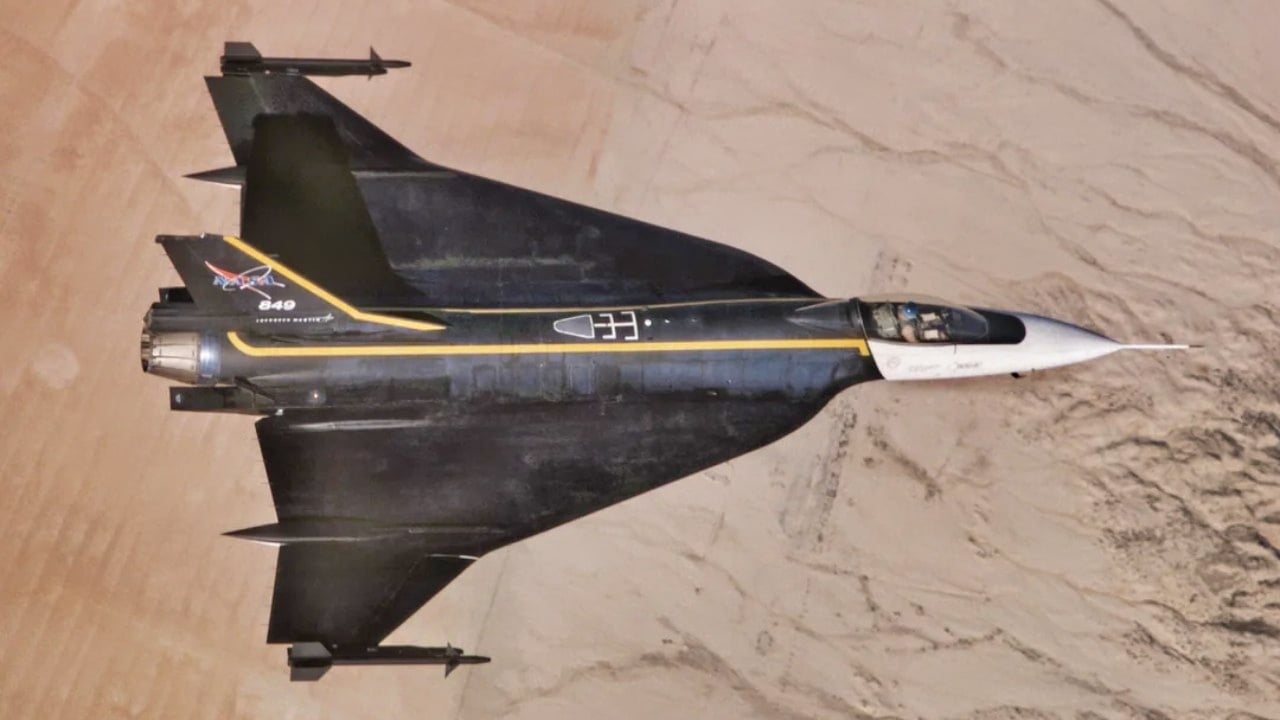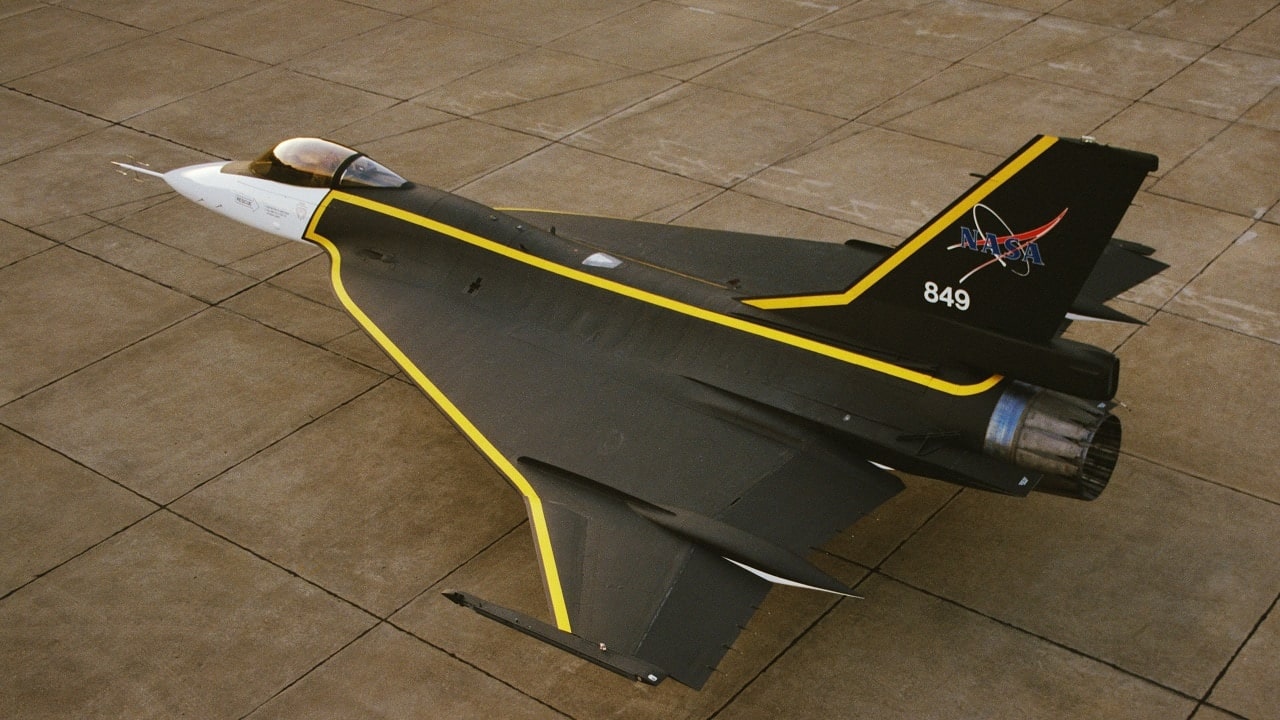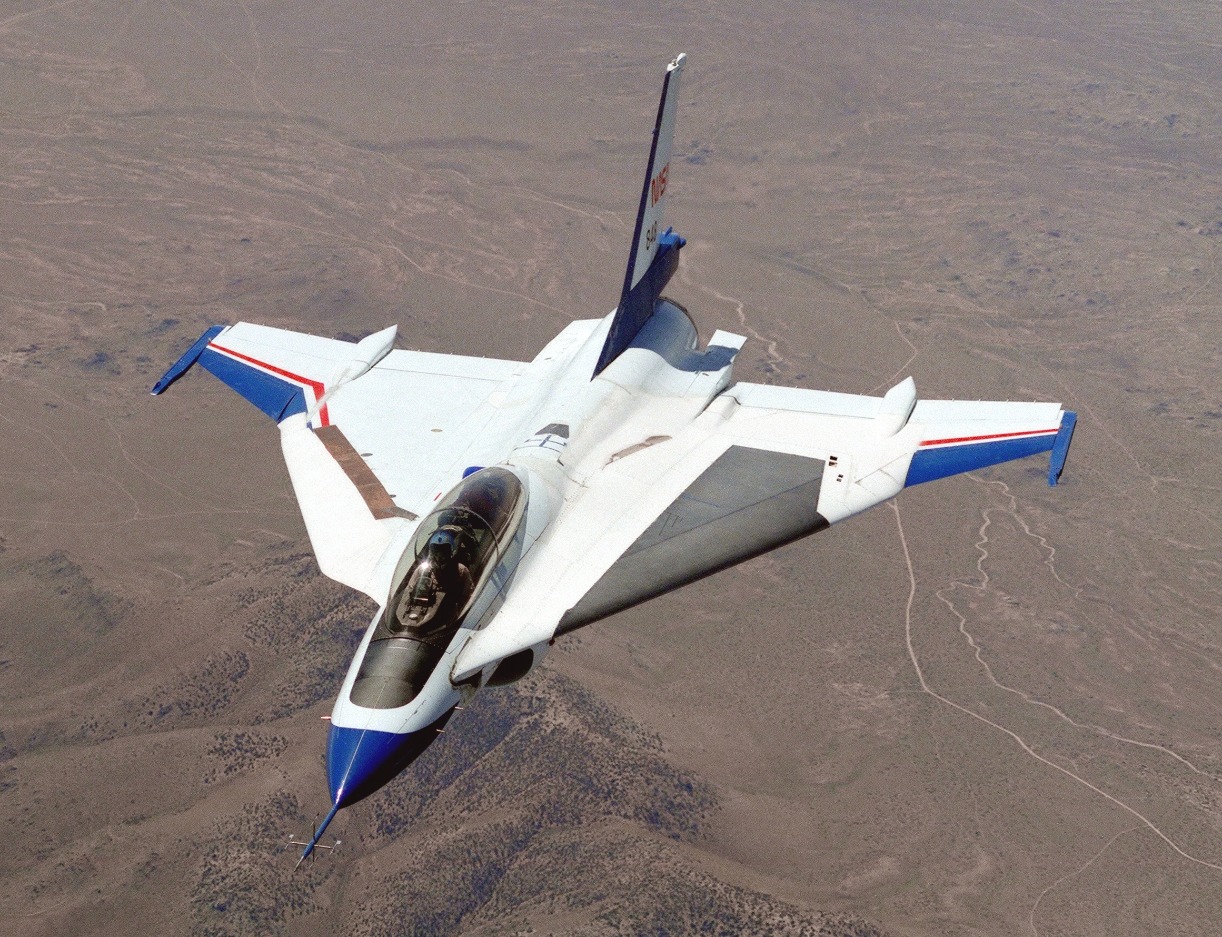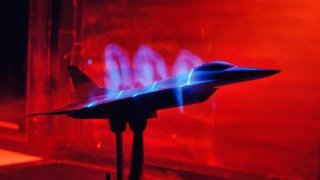F-16XL: The F-16 Fighter The Air Force Can't Ever Send to Ukraine
The F-16 Fighting Falcon, initially designed for the U.S. Air Force over five decades ago, has undergone numerous variants to remain relevant. One such variant, the F-16XL, was developed as a potential replacement for the F-111 Aardvark but lost to the F-15E Strike Eagle in the USAF's Enhanced Tactical Fighter competition.
What You Need To Know: The F-16 Fighting Falcon, designed over 50 years ago, remains a crucial asset for the U.S. Air Force. Among its variants, the F-16XL stood out with a unique cranked arrow wing design that provided greater lift, maneuverability, and the ability to carry twice the ordnance of the base F-16A over 50% greater range.

-Although it lost the Enhanced Tactical Fighter competition to the F-15E Strike Eagle, the F-16XL found a second life with NASA.
-Two prototypes, serial numbers #848 and #849, were used in various aerodynamic experiments throughout the 1990s, including sonic boom studies. Today, these prototypes are cherished exhibits for aviation enthusiasts at aerospace museums.
F-16XL: The Experimental Fighter That Could Have Changed Air Combat
The F-16 Fighting Falcon made headlines last year when the White House granted Ukraine the green light to fly them amidst the ongoing invasion.
The American-made supersonic multirole fighter aircraft was initially designed for the U.S. Air Force more than five decades ago. While the platform may be aging, it plays a critical role in the service’s fleet.
Over the last fifty years, several Fighting Falcon variants emerged, all featuring enhanced capabilities designed to keep the platform relevant in the modern era.
However, not all these variants made it to the service phase.
Notably, General Dynamics’ F-16XL was turned over to NASA a few years after losing the USAF’s Enhanced Tactical Fighter competition to the F-15E Strike Eagle.

The Fighting Falcon Platform
Following the lessons learned in the Vietnam War, U.S. officials recognized the need for an air superiority fighter.
Engineers outlined that a small, lightweight aircraft that could maneuver with minimal energy loss would be an ideal fit. The Air Force initially opposed the Advanced Day Fighter concept as the service felt it would jeopardize its F-15 Eagle program.
Ultimately, however, the idea of competitive prototyping was finalized and the Lightweight Fighter proposal was funded. By the 1970’s, the F-16 Fighting Falcon was designed.
Introducing the F-16XL
Shortly after manufacturer General Dynamics was awarded the Lightweight Fighter program contract, subsequent Fighting Falcon variants were conceptualized.
The Air Force desired a replacement fighter for its F-111 Aardvark and McDonnell Douglas submitted its new Fighting Falcon design to go up against the new F-15E Eagle. The USAF ultimately awarded McDonnell Douglas the contract. However, this wasn’t the end of the rope for the F-16XL idea.
The F-16XL’s NASA legacy
Two of these F-16XL prototypes referred to by their serial numbers #849 and #848 were eventually relegated to NASA’s Langley Research Center. Both jets were used in a variety of experiments that only concluded in the late 1990’s.
In 1995, F-16XL #849 participated in a sonic boom study where it successfully flew 200 feet behind a NASA SR-71 Blackbird to ascertain the boundary of the airframe’s supersonic shockwave. NASA heavily modified the two Fighting Falcon variants, installing a turbine-drive suction system and a thickened left-wing pulled in boundary layer air flowing over the wing.

The F-16XL was designed with a cranked arrow shape that accomplished greater lift than the base F-16.
As Alex Hollings from Sandboxx described it, “This new wing design, which saw a 50-degree angle near the root of the wing for supersonic performance and a 70-degree angle where the wings extended for subsonic handling.” Weighing nearly 600 pounds less than earlier variants, the F-16XL possessed greater maneuverability. The F-16XL could also carry twice the ordinance of the F-16A and deliver it 50% farther.
While the F-16XL prototypes are currently sitting in storage at the Air Force Flight Center Museum at Edwards and on display at the Museum Air Park, they are still revered by aviation buffs.
About the Author: Maya Carlin
Maya Carlin, National Security Writer with The National Interest, is an analyst with the Center for Security Policy and a former Anna Sobol Levy Fellow at IDC Herzliya in Israel. She has by-lines in many publications, including The National Interest, Jerusalem Post, and Times of Israel. You can follow her on Twitter: @MayaCarlin.
All images are Creative Commons.


